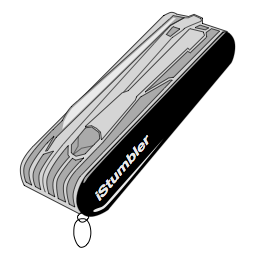Missing Headphone Jack!? Apple’s W1 chip heralds the death of Bluetooth
Apple first wireless chip is the new W1 for wireless EarPods
Apple’s iPhone 7 and Watch Series 2 announcements today included an interesting new piece of hardware, the Apple W1 wireless chip. The AirPod promotional video is long on benefits and short on details but here’s what we know from the introduction.
It’s not Bluetooth™
Which is to say, it’s not an interoperable product based on the Bluetooth SIG’s specifications and testing processes. Notorious for being “ great next year” and for vendors ignoring standard profiles in order to lock users of their hardware into their software, poor audio quality, flakey connections and an inability to synchronize with AirPlay due to a lack of timing signals. Bluetooth is basically the Android of Personal Area Networking, and it’s clear that Apple has had enough and want’s to move the ball into it’s own court.
Apple will continue to support Bluetooth on various devices to the extent that they must to maintain market share. Given their current heft, they have the ability to reduce that demand once 3rd parties are onboard and producing Lightening and W1 enabled accessories. A few generations from now, after automakers have implemented W1 and the need for bluetooth interoperability (and why not create a lightening adapter for bluetooth and car charging to hasten the process).
It’s in the iPhone 7, Watch Series 2 and Ear Pods Now, Tomorrow…
Consider the requirements for high quality streaming audio with long batter life: very low latency and power usage, coupled with just enough CPU and DSP to decode and decompress the audio. More and more electronics manufactures are using SoC solutions wrapped around radio cores, for simplicity and power savings. And the AirPods system, as demonstrated, requires at least three, possibly four W1 chips (One for the phone and each pod, and potentially a fourth for the case).
I have on my desk for e.g. a Wi-Fi Access Point which is based on a standard QCA chipset with enough headroom to run Linux on the radio module itself. Just add a flash chip for storage and solder it to a board. Moore’s Law may have stalled but before it did we reached a very high level of integration and power efficiency, and while further gains may not be quite as fast, they will no doubt continue to come. The W1 is emblematic of this advancement, a fully integrated device controller on a single chip, with dramatic power and cost savings.
The W1 is very likely to be suitable for desktop HID devices (mouse, keyboards, game controllers, both of which I personally use USB versions of, primarily for reliability reasons), portable speakers, microphones, small cameras and printers, remote controls and potentially much of the Internet of Things ecosystem which we can expect to continue to promise great things “next year” for some time unless someone comes in and re-writes the user expectation for ease of use and reliability.
What Next for Apple Wireless Chips?
The W1 is a clear shot across the Bluetooth bow, Apple is clearly serious about user experience for it’s wireless audio products and this product decision reflects a clear vote of no confidence in the future of the SIG and the technology.
What Apple does or doesn’t do about Wi-Fi moving forward will tell us a lot about where they want to take this new interest in chip-level RF engineering.
